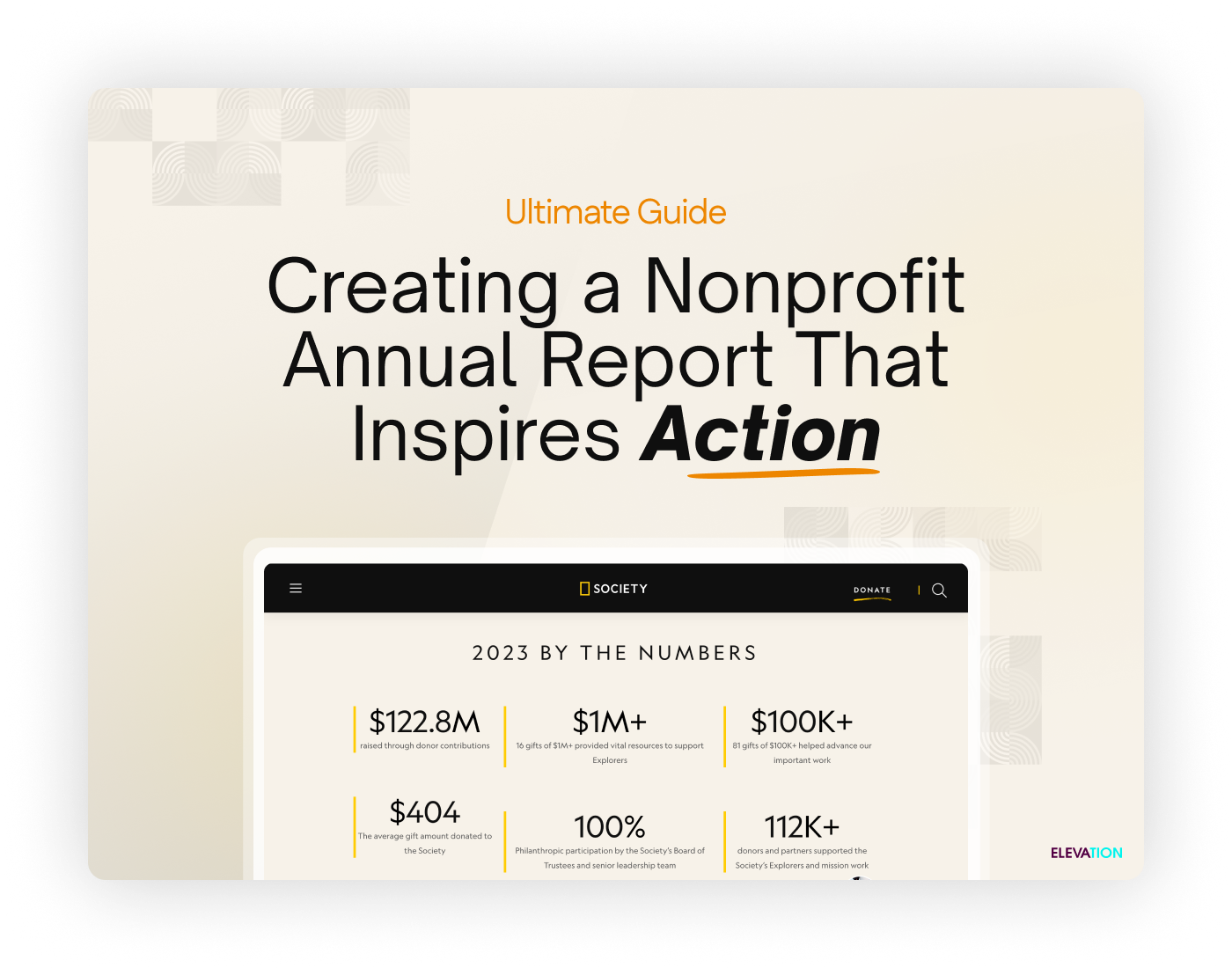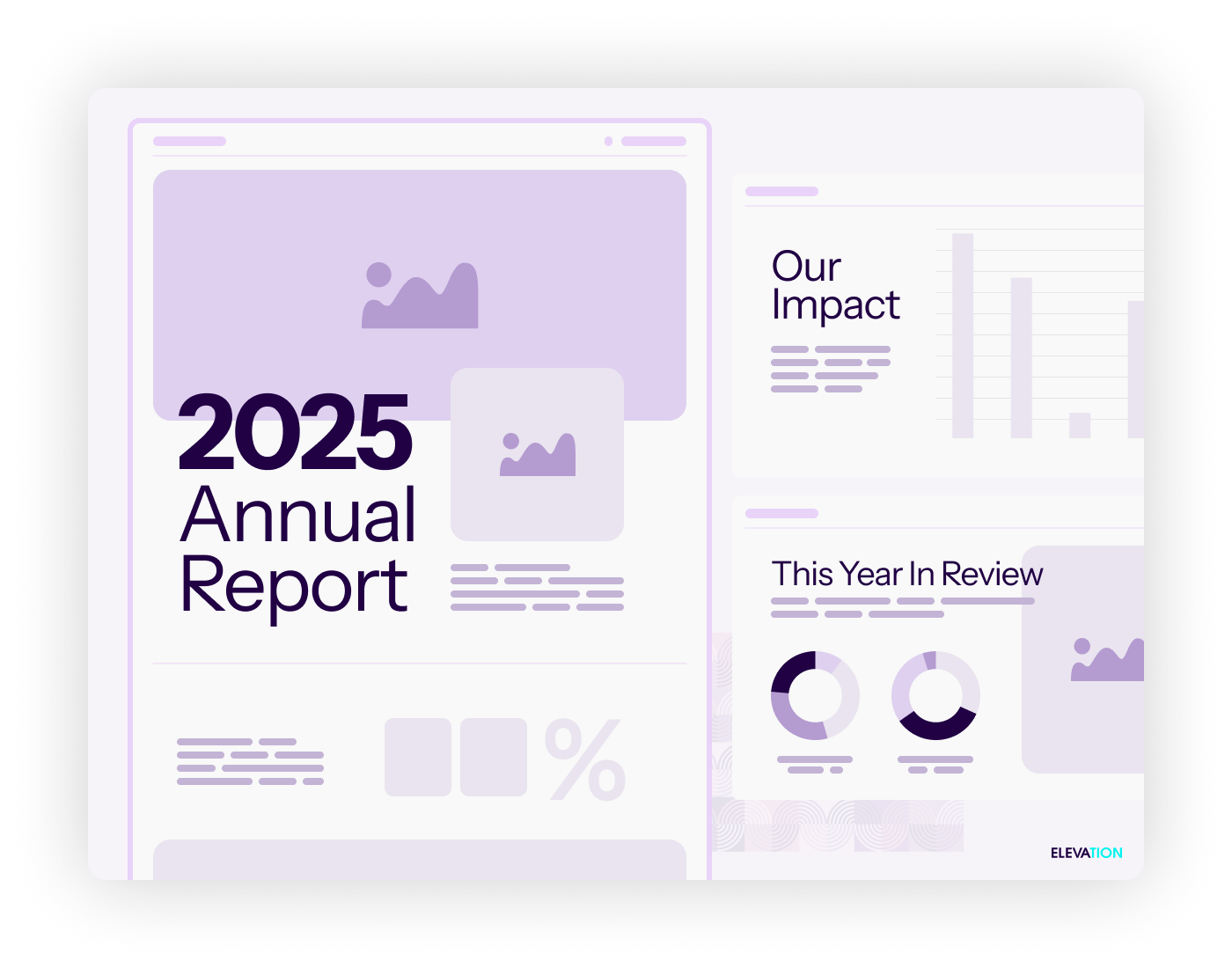Think of your website as a store. When you walk inside, you should feel safe and comfortable in a reputable establishment, one that’s well-maintained, provides a delightful, frictionless experience, and is responsive to the customer’s needs. Without these things, you won’t be spending your time or money inside. Donors and constituents of your organization share the same perspective. When arriving at your website, they will (however subconsciously) critically evaluate its contents prior to partaking in your services, utilizing your resources, or giving a donation.
Your nonprofit’s website is no longer an expense, but a long-term investment into the future and longevity of your organization. Here are 5 reasons why your nonprofit should invest in your website today.
- Build trust with your website visitors
- Increase online donations with online forms, monthly donations and corporate matching programs
- Save time and money by providing a memorable user experience to the right visitors
- Attract the younger generations
- Engage mobile visitors and donors
1. Build Trust
Visitors and donors who arrive at your site are wondering one thing – can I trust this organization? Remember, they can’t see what goes on behind the scenes. Your website is your time to share that, to show your visitors all of the incredible work that you’re doing. An outdated design and unmaintained website can be a red flag to your visitors that your organization is old and might not be running as it used to.
Take a look at some of the largest and most well-known nonprofit organizations. They all have custom designed websites that are actively being maintained. There is no question that they are hard at work, making an impact, and achieving their vision.
Think about your own online presence. What are your visitors learning and understanding about your organization from your website? Do they feel like they’ve returned to 1998, or are you operating in the 21st century? Are they quickly seeing the results and progress you’ve made since the birth of your organization? While your website doesn’t need to cost a fortune, making the investment into a professional, custom-built site will sooth donors, corporate partners, and grant foundations evaluating your organization.
2. Increase Your Online Donations
In 2019, overall giving increased by 4.1%, while online giving increased by 12.1% over the same . Donors are moving online, quickly, and your website must be ready to provide the online donation experience donors are expecting. Investing in your website is really an investment in your online donation experience. With the right tools, your website can be your nonprofit’s top fundraiser.
Provide a Seamless Donation Experience
The online donation form needs to be as simple and easy to complete as possible. Any hindrance and the donor has an extra second to re-think whether donating to your organization is the best idea. Start with an online donation form embedded into your webpage. Gravity Forms is a great option on WordPress sites. If your CRM is not able to integrate with Gravity Forms, try embedding your form through a standard iFrame. Make sure that your form matches your branding as well.
Monthly Giving Program
Did you know that 45% of worldwide donors are enrolled in a monthly giving program? A recurring donation program brings in donations every month, making long-term support of your organization simple. Ensure that your nonprofit’s donation page is equipped with the ability to accept monthly donations. Giving a small donation of $10 a month for a year sounds much better to donors than a one-time donation of $120.
Corporate Matching Program
Your online donation platform should also offer the ability to double every donation through corporate match programs. Many corporations offer these programs to their employees. Make sure that your online platform has this option. Not only will this double the amount donated to your org, but it might also be the reason a donor chooses your organization over another.
3. Create a Memorable Experience for the Right Users
The user experience of your website relates to the way your visitors engage with your website – this includes the buttons, navigation bar, and content on your pages. When a website’s content aligns with what the user is interested in learning about or an action they want to take, they engage with your website for longer. The longer they engage, the more likely they’re building a memory about your organization.
When designing your nonprofit website, always begin with the UX (user experience). Break it down – who are your ideal donors, volunteers, or visitors? What are they here to do or learn? Everything about your website should speak to them, guiding them through their thought processes, taking them where they want to go. Save time and money with a website designed to convert volunteers and donors and spend less on follow-up targeting campaigns.
Many organizations hire a UX consultant to aid in the redesign process. Because we know how important UX is to your website, Elevation offers a UX consultation for every web redesign project. However, if you decide to do the UX in-house, here are the analytics you should track to see if your UX has improved:
- Sessions per User: Should increase
- Pages per Session: Should increase
- Average Session Duration: Should increase
- Bounce Rate: Should decrease
- Loading Time: Should decrease
4. Attract the Younger Generations
Millennials have been found to be more likely to give than other generations, with 84% of millennial employees giving to charity and 70% volunteering for at least one hour [source]. While older generations still give more, more millennials are standing behind causes they believe in, donating their time and money.
When millennial donors reach your site, they have higher expectations for communication and ease than your other donors. Having grown up in the age of the internet, for millennials, navigating through a frictionless online experience is a given and not a delight. If their expectations are not met, it’s easy for them to find another amazing organization. Make sure your loading time is fast, your design is modern, and your site is receptive to the millennial donor.
5. Be Available On-The-Go
Picture this: a potential donor is scrolling through Twitter feed while on the bus on the way home from work. An article pops up about a recent catastrophe or disaster that needs support. Upon learning about the occurrence, they turn to Google and search: how to help the [natural disaster] and are taken to an article which suggests amongst other things that they donate to one of these few organizations that are offering aid and support. Unable to drop everything to volunteer their time, they decide donating is their best way to help. After tapping on the links to those few organizations, they learn that only one of them has a website that they can properly use on their iPhone, so they donate $50 to them, all before they get home from work.
This is only one example of why a responsive website is more important than ever. Our lives are getting faster, we’re on the go more than ever, but increasingly so, we’re able to be connected from anywhere. Just look at the statistics: giving by mobile device increased 50% while donating from a desktop has actually decreased by 10%. As well, 41% of donors are giving in response to natural disasters. Don’t miss out on these donations. Ensure your website is responsive and easy to navigate on every device.
Are You Ready?
It’s time to make the investment into your nonprofit’s future. Not sure how to get started? Elevation has a team of nonprofit website specialists ready to join your team. Contact us today and let’s take the next step into your nonprofit’s future together.




